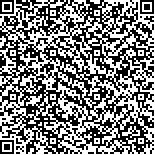下载中心
优秀审稿专家
优秀论文
相关链接
摘要

二氧化碳和甲烷减排是控制全球增温最核心的手段,传统的人为碳排放计算主要依赖于在线监测和清单算法,2019年第49届IPCC全会明确了利用大气观测通过“自上而下”通量计算对排放清单进行支撑和验证,因此了解大气遥感碳监测发展趋势以及同化反演技术方法成为了中国应对国际气候变化事务亟待探明的重要问题。根据卫星遥感技术发展进程和监测需求,将碳监测遥感的发展划分为3个阶段(1999年—2008年,2009年—2019年,2019年—),前两个阶段和第三阶段对应卫星分别为第一代和第二代温室气体监测卫星。本文在分析日本、美国、欧洲和中国第一代段碳监测卫星遥感探测技术发展进程的基础上,重点介绍了第二代卫星遥感探测技术的创新及其在探测精度、分辨率和覆盖率等方面提升。为了满足全球和区域人为碳排放监测的重大需求,需要优化反演算法提高精度、科学规划卫星的组网观测提升监测效率。同时也进一步阐述了如何依据组网观测的全球高精度、高时空分辨率的卫星数据,利用“自上而下”数据同化方法获得独立源汇信息来补充和验证清单。最后,指出了卫星高光谱遥感和新一代碳监测卫星的未来发展趋势及估算人为碳排放的潜力。
Reduction of greenhouse gas (GHG) (carbon dioxide (CO2) and methane (CH4)) emissions is a crucial way to mitigate global warming. Traditional estimation of anthropogenic carbon emissions mainly relies on inventory method and lacks independent validation data. The 49th IPCC plenary session (2019) proposed the use of “top-down” inversion with atmospheric observations to support and verify GHG emission inventories. The “top-down” method depends on atmospheric concentration observations, chemical transport models, and data assimilation algorithms. Global covered atmospheric concentration measurement with high accuracy and precision is a key element in better using the “top-down” method in global carbon flux investigation. Measurements from space provide global and regional datasets that improve the spatial coverage of existing in-situ networks. Understanding the development of spaceborned GHG monitoring techniques and “top-down” method has become an important issue in China’s response to international climate change affairs.We divided the carbon monitoring remote sensing technology into three phases (1999—2008, 2009—2019, 2019—) based on the development process of satellite remote sensing technology and monitoring requirements. The corresponding satellites in the first two phases were called the first generation, and the corresponding satellites in the third phases were called the second generation. The first generation of GHG satellites was tested in many aspects, such as measurement principle, calibration, and validation. These processes were performed to improve the observation accuracy and the spatial and temporal resolutions of measurements. These efforts made continuous improvement on measurement accuracy and obtained approximately 10 years of scientific data and research results. The first generation of GHG monitoring satellites mainly focused on technical verification and scientific target exploration flying a polar-orbit and onboarded passive remote sensing instrument with narrow swath, mainly aiming to obtain high-precision remote sensing data. The first generation laid the foundation, and the second generation entered the decade of rapid development and application from 2019 to 2028. The second generation of GHG monitoring satellites mainly aimed to improve the spatial and temporal resolutions of observations, such as increasing the swath and observation data in the cross-orbit direction (≥200 km) or using geostationary orbit to increase the observation frequency and data coverage, thereby greatly improving the observation efficiency. Active laser detectors can be used to obtain profile data with high accuracy (0.5 PPM), which are unaffected by sunlight.Optimizing the retrieval algorithm to improve the accuracy and scientifically planning the operational constellations of satellites to improve the monitoring efficiency are necessary. These processes are required to meet the major demand of global and regional monitoring of anthropogenic carbon emissions. Furthermore, the verification of the inventory algorithm is introduced by using the “top-down” data assimilation method with high precision, high spatial and temporal resolution measurements of the satellite constellations. The future development trend of hyperspectral remote sensing and new generation of carbon monitoring satellites and the potential of estimating anthropogenic carbon emissions are provided.

